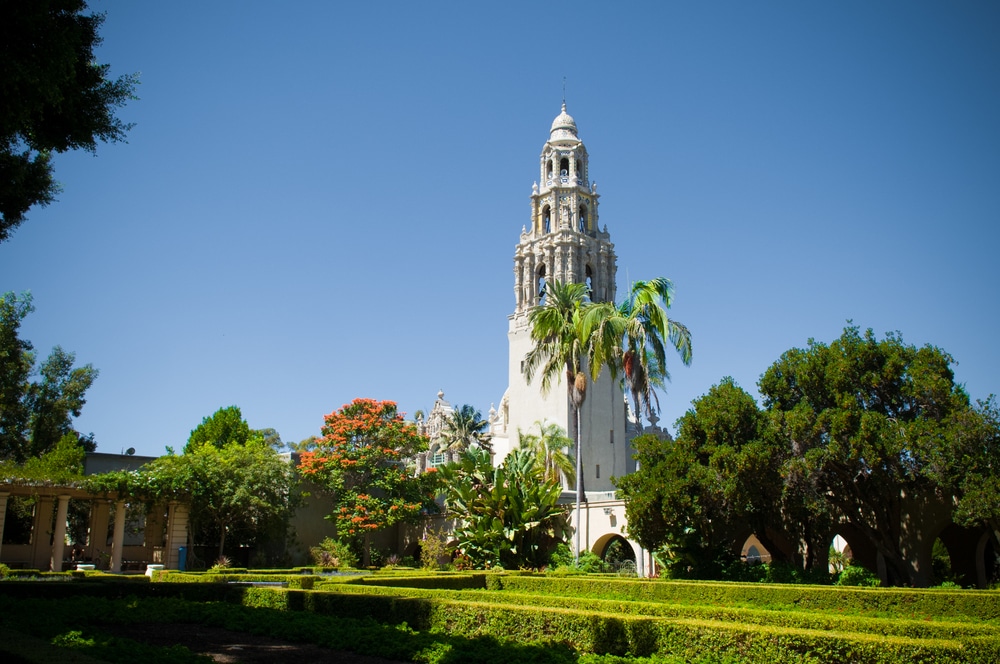
Unique History of San Diego Parks – Part 1
Here in San Diego, we’re blessed with beautiful weather and a climate that can accommodate a diverse variety of plants and greenery from all over the world.
We’re also a city of people that love to be outdoors as much as possible.
As we head into the warmer months of the year, what better way to enjoy the climate of San Diego than spending time in a park?
There are over 190 parks in San Diego, and while these parks are all wonderful for their own merits, some of them also have unique and interesting stories behind them too.
Read below for the first in a two-part series examining some of the fascinating stories behind a few San Diego parks.
Balboa Park
(map)
Next time you’re strolling down the Prado or walking across the Cabrillo Bridge, take a moment to think about how much this park has changed over the years.
Most locals know the story of how Balboa Park was built in the 1915 Panama-California Exposition, but the true history of the park goes back further than that.
It was 1868 when a group of city leaders had the vision to set aside 1,400 acres of land on the mesa above downtown to one day serve as an iconic city park. It was a rather audacious plan at the time. San Diego had a population of only 2,300 people and the only other example of a large urban park that existed in the United States at the time was Central Park in New York City.
Yet even with this vision, it took a while for things to happen. The first major development in “City Park,” as it was called, took place in 1892 when horticulturalist Kate Sessions leased 36 acres of land in the park for a nursery. As part of the deal, she planted trees, flowers, and other shrubs to beautify the park, including birds of paradise, queen palms, and poinsettias. Many of the trees she planted are still alive today.
In 1910 the park was formally given the name Balboa Park and preparations began for hosting the 1915 Panama-California Exposition. This is when the first buildings of the Spanish-colonial architectural style were built and some of the more iconic pieces of the park began to come together, such as the Cabrillo Bridge, the Moreton Bay fig tree, and the Lily Pond with adjacent Botanical Building.
The exhibition was a hit. Visitors marveled at the architectural style and diversity of garden environments on display. The exposition was extended to a second year and welcomed a total of 3.7 million people. It was the true beginning of the Balboa Park we know today.
There were some deviations though.
During World War II, much of the park was taken over by the war effort. The San Diego Museum of Art became a 400-bed recovery center, the House of Hospitality served as a nurses’ dormitory, and the Lily Pond became a rehabilitation pool.
Also, many of the original buildings were not built to stand the test of time. Some even burnt down. Yet the Spanish colonial architectural style persists in the park to this day.
Go check out this amazing park for yourself! Better yet, plan to go on a Tuesday so you can visit a museum or two for free while you’re there.
Presidio Park
(map)
Taking up the entire length of a vertical hillside from Old Town to Mission Hills is a green space known as Presidio Park. Aside from being one of our favorite walking parks, the area itself has quite a unique history.
The park grounds were the site of the original San Diego mission before it moved five miles east to its current location in Mission Valley. The original chapel still exists, as do remnants of the fortified town that once occupied the space, known in Spanish as a “presidio.”
The presidio itself mostly occupied the lower parts of the hill and once consisted of a whole town’s worth of soldiers, administrators, and their families.
The history of the Presidio and Old Town is worthy of a full book, so instead, we’ll switch gears to share the story of another piece of Presidio Park lore, the “white deer.”
The white deer was an actual female fallow deer that escaped from the San Diego Zoo in 1965. She took up residence in Presidio Park and lived there for the next ten years. The doe became a beloved mascot of the park and was adored by many of the residents at the time.
Unfortunately, she had an untimely end when she was shot with a tranquilizer dart by Animal Control in an attempt to keep her from crossing the I-8 freeway. The shot was unexpectedly lethal.
The deer was so loved by the neighborhood that they built a little monument to her that you can still see today. It can be found near the east entrance to the park off Taylor Street, near the Inspiration Point parking lot.
Chicano Park
(map)
Known for its iconic murals, Chicano Park is also a monument to community action.
The neighborhood of Barrio Logan, in which the park is located, had long been an afterthought to many San Diego civic leaders. Historically it was a vibrant Latino community just east of downtown, but during World War II the community lost its access to the San Diego Bay when the Navy shipyards were set up. Then in the 1960s major portions of the neighborhood were demolished to make way for the I-5 freeway and the Coronado Bridge.
In 1970 the city made plans to build a police station under the Coronado Bridge even though they had previously promised the residents of Barrio Logan that the space would become a park.
When the news got out the neighborhood rose up to claim the space for themselves. They formed human chains around the excavation equipment and camped out in the park for 12 days.
Tense negotiations followed, but ultimately the neighborhood prevailed and the iconic Chicano Park was born.
Pioneer Park
(map)
Pioneer Park is another place that comes up in San Diego lore quite often. It’s even rumored to be haunted!
The reason for such rumors is that Pioneer Park used to be a cemetery.
Calvary Cemetery was in use on the land from 1876 to 1960. Nearly 4,000 bodies were laid to rest in the space.
You can still find evidence of the park’s former use today. Many of the markers and tombstones were moved to the SE corner of the park.
Yet underneath that nice green grass, the bodies still remain, and that’s why some people claim the park is haunted!
—-
Interested in learning about more San Diego parks? Go here for the second part in our series!

Join our Senior Wellness Society for the latest news on Medicare and tips for healthy living in San Diego!
Sign up now ›Are you looking for specialized medical care in San Diego?
Our directory has more than 850 doctors in San Diego County of various specialties who are available to help you.
Find a doctor